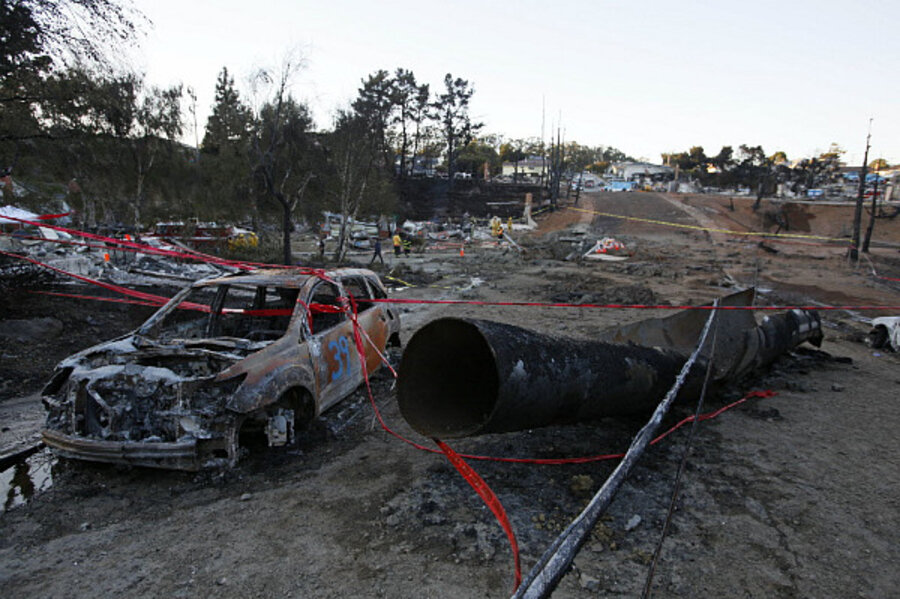What caused deadly San Bruno fire? Investigations underway
Loading...
Investigators have begun efforts to find the cause of a fatal natural gas pipeline explosion and fire in San Bruno, Calif., that destroyed dozens of homes.
Four people were killed in the blast and fire and at least 50 people were injured, according to local public safety officials.
As firefighters continued their search through the stricken area for victims, federal investigators indicated that they would be looking at a range of potential contributing factors. These include the pipeline's maintenance record, pressure conditions in the 30-inch-diameter line at the time of the explosion, and at the warning systems the line's owner – Pacific Gas and Electric – had in place to alert technicians of problems in the line.
Officials also will be looking into the role human factors may have played, ranging from training to PG&E's response time in addressing complaints some residents say they lodged about gas they smelled before the blast.
It didn't take long to spot what could become one hefty piece of evidence in the blast.
At a briefing Friday night in San Bruno, Christopher Hart, vice-chairman of the National Transportation and Safety Board, described coming across a large portion of the gas-transmission-line pipe in a street "some distance" from the large crater where the blast occurred.
In a statement released Friday night, PG&E President Chris Johns pledged the company's full cooperation with federal, state, and local investigators. The company has set aside $1 million for community groups such as the Red Cross, the United Way, and others involved in helping residents of the stricken area.
Between 2002 and 2009, PG&E experienced 19 "incidents" along its transmissions lines, according to the non-profit Pipeline Safety Trust, based in Bellingham, Wash. The vast majority of incidents involved line breaks caused when workers unrelated to PG&E inadvertently broke a pipe while operating excavators.
But five of the incidents were traced to pipeline corrosion, equipment malfunction, or operator mistakes, according to the Trust's data base. One incident out of the 19 led to a fatality; two others resulted in injuries.
Beyond San Bruno's borders, the tragedy may well prompt other natural-gas companies to take a closer look at their natural-gas transmission maintenance and safety procedures – particularly where those transmission lines pass beneath population centers.
More than 2 million miles of natural-gas transmission and distribution lines crisscross the United States. Of that, transmission lines account for some 296,000 miles, according to federal statistics the Trust has compiled. Laid end to end, that would reach the moon and start a return trip. Fifty-nine percent of existing transmission lines were installed before 1970.


